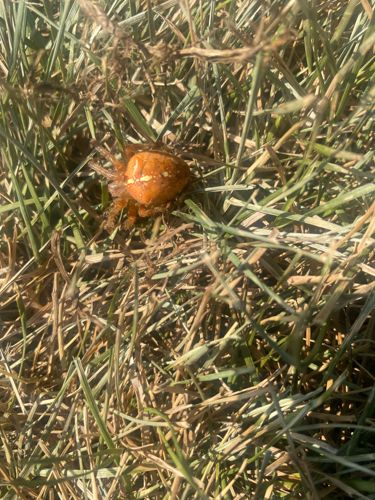Marbled Orb-weaver
Scientific Name: Araneus marmoreus
Order & Family: Araneae (Spiders), Araneidae (Orb-weavers)
Size: Females typically 8-14 mm; males 5-8 mm. The prominent abdomen in females can make them appear larger.

Natural Habitat
Woodlands, gardens, fields, and other vegetated areas where they can build webs between plants or structures. Often found in slightly disturbed habitats with ample vegetation.
Diet & Feeding
Strictly carnivorous, feeding primarily on insects caught in their orb webs, such as flies, moths, beetles, and other flying or jumping arthropods.
Behavior Patterns
Known for building large, intricate orb webs, often stretched vertically. They typically build a new web daily, usually at dusk, consuming the old silk. During the day, the spider often rests in a retreat near the top of the web, sometimes a curled leaf or silken tent. When disturbed, they may drop to the ground. Mating usually occurs in late summer/early fall, with females laying eggs in silken sacs before dying off with the first hard frosts.
Risks & Benefits
Generally considered harmless to humans. Their bite is not medically significant and is rare, occurring only if severely provoked. They are beneficial as natural pest control, consuming a variety of insects that can be agricultural or household pests. Their presence indicates a healthy ecosystem.
Identified on: 9/11/2025